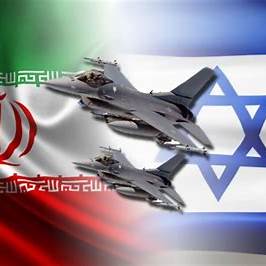On June 22, 2025, U.S. forces struck three Iranian nuclear facilities—Fordow, Natanz, and Isfahan—using bunker-buster bombs and Tomahawk cruise missiles. President Trump confirmed these strikes, calling them decisive in dismantling Iran’s nuclear infrastructure.
🇮🇱 Israel’s Continued Offensive
Israel has executed multiple waves of airstrikes targeting Iran’s nuclear and military sites:
- On June 21, 150+ missiles hit the Isfahan nuclear site, destroying uranium enrichment infrastructure and command posts
- Notable fatalities include senior Quds Force commander Saeed Izadi and other top officials
🔁 Iranian Retaliation
Iran has launched ballistic missiles and drones into Israel, causing structural damage—most were intercepted. A tragic side of this escalation includes the Sejjil missile strike on Soroka Hospital in Beersheba on June 19, wounding at least 50 people and prompting concerns of potential war crimes
⚖️ Diplomacy vs. Escalation
- Iran refuses nuclear negotiations while under attack, despite European diplomatic efforts
- Iran’s FM Abbas Araghchi warned that U.S. involvement would be “very, very dangerous” and hinted at plans for missile strikes on U.S. fleets and targeting the Strait of Hormuz
- Regional proxies like Hezbollah and the Houthis have so far stayed on the sidelines, but the risk of wider escalation remains
🌐 Wider Regional and Global Impact
- The UK closed its embassy in Tehran amid faltering European diplomacy and mounting threats
- U.S. B‑2 bombers redeployed to Guam, signaling readiness for further strikes if needed
- The United Nations and IAEA urgently cautioned against attacks on nuclear facilities due to possible radioactive hazards
📊 Current Statistics
- Casualties: ~430 Iranian civilians killed, 3,500 injured—Israeli land casualties around 24 with thousands displaced or injured
- Conflict zone expanded beyond Iran and Israel to include impacts in the West Bank, Lebanon, Yemen, Jordan, Syria, and Iraq

